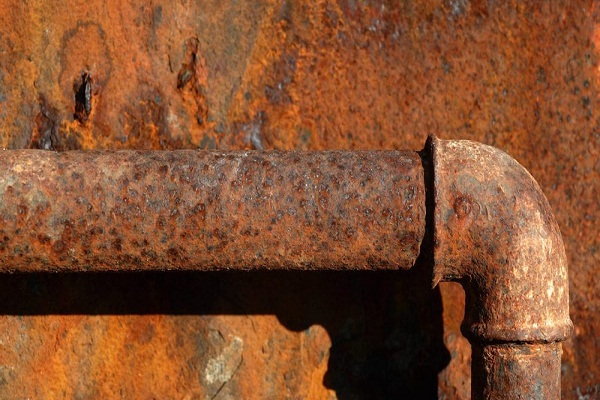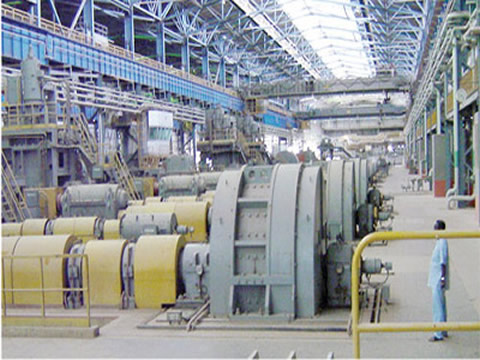When English poet Samuel Taylor Coleridge wrote the above lines, he was describing the plight of a sailor stranded at sea—unfortunately, his prescient words are fast becoming applicable to the North American water supply infrastructure. In the United States, about 151.4 billion L (40 billion gal) of water is treated every day for domestic and public use, while about (300 billion gal) is employed for agricultural and commercial purposes. In most distribution systems, the amount of water lost or unaccounted for is typically 20 to 30 percent, but it can be as high as 50 percent for older systems.2 In addition to the apparent loss of water and damage to pipe network (i.e. bedding erosion and pipe breaks), leakage can also become a public health issue due to contaminants entering the pipe through openings when water pressure in the distribution system is lost.
Pipe dreams and nightmares
According to the American Water Works Association (AWWA), leaks in individual main water lines can reach up to 3785 L (1000 gal) per minute, while valve leaks can reach up to 1893 L (500 gal). Leaks due to corrosion are the worst culprits and the hardest to detect because they usually start out small as a result of excessive pressure, improper installation, settlement, or overloading. Main line and valve leaks progressively worsen until they become significant problems. At up to $800 per mile of main line, the cost of their detection is both expensive and time-consuming.
Total replacement of the approximately 3.2 million km (2 million mi) of water pipe inventory in the United States—not forgetting the additional 965,606 km (600,000 mi) of wastewater pipe and the 112,000 km (69,594 mi) of Canadian water mains—would be expensive, disruptive, and protracted, to say the least. Given the problem’s enormity and complexity, utilities are scrambling to develop alternative water and wastewater pipeline rehabilitation strategies. The remedy currently gaining the most traction is ‘trenchless technology.’ Central to this approach is the selection and use of virtually leak-free, high-density polyethylene pipe, also known as HDPE pipe.
Trenchless technology is the use of non-intrusive construction methods, materials, and equipment for the installation, replacement, or rehabilitation of underground pipe infrastructure. It has recently gained favor with utilities and their customers, partly because it is quicker and less socially disruptive than open-trench construction, but mostly because it can take full advantage of recent advances in the development of long-lasting HDPE pipe.
Polyethylene possibilities
High-density polyethylene pipe is usually produced in straight lengths up to 15 m (50 ft) long and coiled in diameters up through 152 mm (6 in.). The material neither tuberculates nor supports bacterial growth. As such, HDPE pipes have excellent chemical resistance and are suitable for even harsh environments. Given the Federal Highway Administration’s (FHWA’s) estimation utilities annually spend $36 billion on protecting pipes from corrosion, it is also important to note polyethylene is dielectric (i.e. non-conducting), which means it is not subject to corrosion and maintains its flow capability over time. While the Hazen-Williams C Factor of other materials is dramatically reduced over time due to corrosion and/or tuberculation, HDPE remains constant at 150.
Although many different types of plastic pipe share these particular advantages, HDPE pipes and related products combine these attributes with the added benefits of heat-fused joints and flexibility.
Heat fusion
HDPE pipe offers excellent fusion integrity, enabling the development of one continuous pipeline system. Heat fusion, the process of joining pieces of pipe to each other or other elements (e.g. valves), produces fully sealed connections. This can eliminate the potential leak points that could come every 3.1 to 6.1 m (10 to 20 ft) with other materials and fixtures.
The life-cycle cost of HDPE pipe can differ from other materials because the allowable water leakage is zero, rather than the typical leakage rates of 10 to 20 percent for conventional counterparts. HDPE pipe’s fused joints are self-restraining, thereby eliminating costly thrust restraints or thrust blocks. Furthermore, HDPE pipe’s fused joints virtually never leak, effectively eliminating infiltration and exfiltration problems experienced with alternate pipe joints.
The high density polyethylene pipe industry conservatively estimates the service life for HDPE pipe to be between 50 and 100 years. Potentially, this can relate to savings in replacement costs for generations to come.
Flexibility
HDPE pipe can provide greater durability and flexibility than certain other materials because it can be easily bent into place and pulled through existing pipes. HDPE pipe can be reshaped to a radius 25 times the nominal pipe diameter. In other words, 305-mm (12-in.) HDPE pipe can be cold-formed in the field to a 7.6-m (25-ft) radius, which can eliminate the many fittings required for directional changes in a piping system.
The flexibility of HDPE pressure pipe makes it well-suited for dynamic soils, including areas prone to earthquake. It can accept repetitive pressure surges significantly exceeding the static pressure rating of the pipe. Its combination of flexibility and leak-free joints also allows cost-effective installation methods such as horizontal directional drilling (HDD), pipe bursting, sliplining, and plow and plant.
Additionally, since polyethylene is far less dense than other materials, it does not demand the use of heavy-lifting equipment for installation. Nevertheless, HDPE pipes can structurally withstand various types of impacts, especially in cold-weather situations where other materials can be more prone to cracks and breaks.
Source: greenbuildingsolutions










